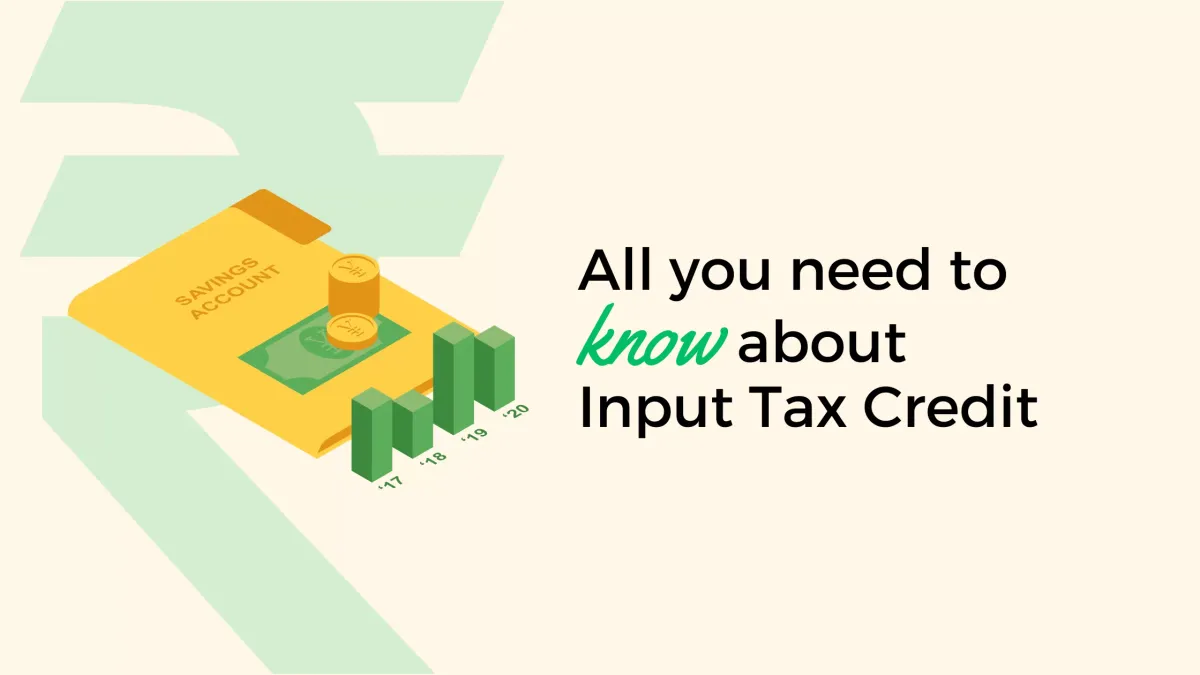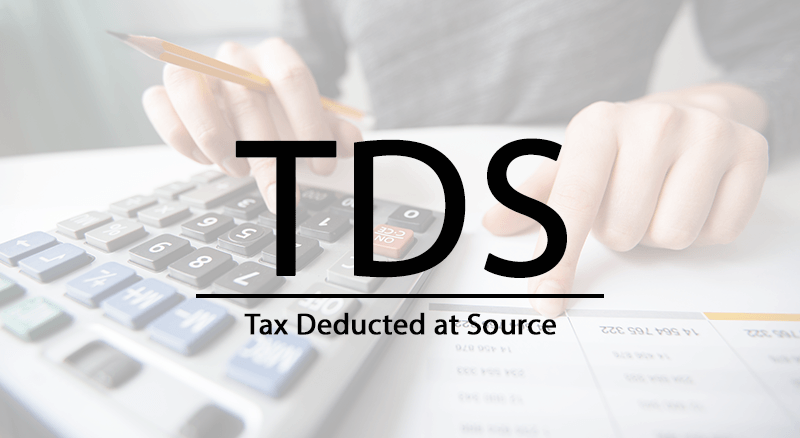Input Tax Credit Primer: Your Guide to Savings

An estimated ₹1.2 trillion (approximately $16.5 billion) worth of input tax credit is claimed by businesses across India annually, unveiling the immense potential for financial savings hidden within tax regulations. Despite its substantial fiscal implications, the concept of input tax credit remains obscured by complexity for many entrepreneurs and finance professionals. This input tax credit primer promises to clarify the mist, delineating the path for businesses to not only understand but also maximize the input tax credit benefits available to them.
By shedding light on this cornerstone of Indian taxation, the discourse on input tax credit explained will transition from daunting to doable. Fostering operational efficiency and financial prudence has never been more pivotal, and for businesses looking to leverage every advantage, comprehending and applying input tax credits is indispensable to this endeavor. Let's embark on an explorative journey that could culminate in remarkable savings and elevated financial fluency for your business.
Key Takeaways
- Unlock the truth behind the staggering amount of input tax credit claimed yearly in India.
- Grasp the essentials of the input tax credit to take advantage of potential financial benefits for your business.
- Understand the significance of input tax credit for achieving operational efficiency and managing your fiscal responsibilities more effectively.
- Prepare for an insightful exploration into the myriad facets of input tax credit.
- Discover how an input tax credit primer can be your ally in navigating the complex world of Indian taxes.
What is Input Tax Credit? Understanding the Basics
When delving into the fundamentals of financial mechanisms for businesses within India, the concept of Input Tax Credit (ITC) emerges as a cornerstone of efficient tax planning. Gaining a solid understanding of input tax credit is paramount for any business seeking to enable savings and enhance their fiscal workflow within the nation's tax regime. The Goods and Services Tax (GST) framework, pivotal in India's economic structure, facilitates such potential savings through ITC, a critical element in the contemporary tax landscape.
Defining Input Tax Credit in the Indian Context
In India's GST system, the input tax credit represents the amount of tax a business can reclaim on purchases made towards the production of goods and services. This method alleviates the cascading burden of taxes which can accumulate at every stage of the supply chain. For businesses aiming to remain economically viable while ensuring compliance with the input tax credit rules, comprehending and utilizing ITC is not just strategic, but essential.
The Role of GST in Input Tax Credit
Under the GST structure, input tax credit stands out as a credit mechanism that businesses can utilize to offset their output tax liabilities. This framework is designed to create a seamless flow of tax credits in the economy’s non-intrusive value chain of goods and services. The concept hinges upon the idea that only the final consumer should bear the tax incurred during economic activities. As a result, when businesses acknowledge the importance of claiming input tax credit, they invariably reinforce the efficiency within the entire economic paradigm, thus stimulating transparent and responsible trade practices.
Eligibility Criteria for Claiming Input Tax Credit
When it comes to the input tax credit scheme in India, navigating the eligibility criteria is crucial for businesses looking forward to claiming input tax credit. The eligibility is tightly interwoven with a set of stringent input tax credit rules, designed to ensure that only legitimate claims pass through. Here, we discuss the specific conditions that must be met to benefit from the scheme.
Valid GST Registration: Businesses must be registered under GST to claim ITC. The GSTIN (Goods and Service Tax Identification Number) serves as the primary requisite for the input tax credit.
Compliant Tax Invoices: The acquisition of goods or services should be backed by GST-compliant tax invoices or debit notes furnished by registered suppliers.
Receipt of Goods and/or Services: ITC can only be claimed when the goods or services have been actually received, ensuring that credits are matched with delivery.
Timely Tax Returns: Filing of GST returns within the specified due dates is mandatory to maintain eligibility for ITC.
Below is a comprehensive table illustrating the eligibility criteria and the necessary documents essential for claiming input tax credit:
| Eligibility Criterion | Relevant Documents Required | Additional Remarks |
|---|---|---|
| Registered under GST | GSTIN Certificate | Ensure details are up-to-date and accurate |
| Valid Tax Invoices/Delivery Challans | GST-compliant Invoices/Notes | Invoices or notes need to specify GST amount clearly |
| Actual Receipt of Goods/Services | Receipt Vouchers | ITC claim aligns with the possession of goods/services |
| Filing of GST Returns | GSTR-2A, GSTR-3B | Filing must be within the stipulated deadline |
It is crucial to note exclusions apply to certain goods and services, and ITC claims on such items are barred. For example, motor vehicles for personal use or membership of a club, health, or fitness center. In summary, careful attention to the input tax credit rules and appropriate documentation can significantly ease the process of claiming input tax credit. Ensuring adherence to these regulations is the cornerstone of making the most of the ITC provisions.
The Input Tax Credit Primer: How it Works
Understanding the input tax credit process is key for businesses looking to leverage tax benefits. It enables them to reduce their taxable income by the amount of GST paid on purchases. To clarify, the input tax credit benefits can be profound, ranging from improved cash flows to reduced overall tax expenses. Here, we explain how this critical component of the GST framework operates in practice.
First and foremost, businesses accrue ITC on their purchases. It's imperative to maintain thorough records of all transactions to which ITC applies. Once these credits are accrued, businesses can then apply them against their output tax liabilities, thereby lowering the total amount of GST they need to pay.
For the purpose of clarity, let's visualize the input tax credit process with a detailed breakdown:
- Accumulation: Businesses accumulate ITC on the GST paid for their purchased goods or services intended for business use.
- Calculation: The ITC amount is calculated based on invoices and compliance with various GST rules.
- Utilization: Businesses apply the accumulated ITC to reduce their monthly GST liability.
- Reporting: Accurate reporting of ITC in GST returns is vital, and it ensures that the claimed credit is justified and transparent.
- Reconciliation: Regular reconciliation of ITC claimed with the GST paid on purchases ensures consistency and averts future discrepancies.
Let us examine the mechanics of ITC in a practical scenario:
| Month | GST on Purchases (INR) | GST on Sales (INR) | ITC Available (INR) | Net GST Payable (INR) |
|---|---|---|---|---|
| January | 50,000 | 100,000 | 50,000 | 50,000 |
| February | 30,000 | 80,000 | 30,000 | 50,000 |
| March | 70,000 | 120,000 | 70,000 | 50,000 |
This table showcases a simple quarterly outline where the ITC significantly lowers the net GST payable each month. As the table reflects, the input tax credit explained within this context demystifies its advantageous impact on a company's finances.
By understanding the input tax credit process, businesses can ensure they are harnessing all input tax credit benefits available to them, thereby turning a routine tax responsibility into a strategic financial advantage.
Navigating the Input Tax Credit Rules
Untangling the intricacies of the input tax credit rules is a challenge that businesses in India face diligently. To claim input tax credits efficiently, it's paramount to adhere to stringent documentation requirements and understand the defined timelines and conditions detailed in the input tax credit scheme.
Documentation Necessary for ITC Claims
Ensuring that the appropriate documentation for ITC claims is comprehensive and accessible is essential for successful navigation. Below is an outline of the indispensable records that businesses should maintain:
| Document Type | Details Required | Purpose |
|---|---|---|
| Invoice from Supplier | Supplier GSTIN, Invoice Number, Date, Description of Goods/Services, Taxable Value, GST Rate and Amount | To validate the authenticity of the transaction and eligibility of credit. |
| Debit Note | Note Number, Date, Supplier Details, Adjustment Amount, GST Rate and Amount | For recording a reduction in valuation and adjustment in the tax liability. |
| Bill of Entry | Import details including valuation and GST paid at customs. | Crucial for claiming ITC on imported goods. |
| Receipt Voucher | Advance Payment details, Supplier GSTIN, Voucher Number, Date, GST Rate and Amount | For advance payment against supply and claiming ITC accordingly. |
Systematic record-keeping of these documents supports compliance with the input tax credit rules and facilitates smoother audits and verification processes.
Understanding the Time Limits and Conditions
To benefit from the input tax credit scheme, awareness of the legal time frames and conditions for ITC claims is vital. Missed deadlines can result in the forfeiture of ITC entitlements:
- ITC can be claimed within the financial year to which the invoice or debit note pertains, or before the due date of the annual return filing, whichever is earlier.
- Businesses must file monthly returns to carry forward or utilize the ITC.
- An ITC claim is subject to reversal if payment to the supplier is not made within 180 days from the date of invoice issuance.
Understanding and complying with these aspects of the input tax credit rules ensures that businesses remain on the right side of the law and do not miss out on any reclaimable tax credits.
Input Tax Credit Scheme: An Overview
The Input Tax Credit (ITC) Scheme is a pivotal aspect of the GST regime in India, representing a major shift towards a more streamlined tax structure. This scheme facilitates the seamless flow of input credits across the supply chain, from manufacturers to end consumers, and holds significant input tax credit benefits for compliant businesses. Under this framework, companies are incentivized to initiate claiming input tax credit, thereby reducing tax liabilities and encouraging fair pricing.
Sectors Eligible for the Scheme
Eligibility for the ITC scheme spans various sectors, enabling a broad spectrum of industries to reduce their tax burden through credit claims. This scheme covers most goods and services used in the course or furtherance of business, with a few exceptions prescribed by GST law. Sectors ranging from manufacturing, services, IT to real estate can redirect the availed tax credits to achieve cost optimization and enhance working capital.
Input Tax Credit in Special Economic Zones
Special Economic Zones (SEZs), designated areas for promoting trade and economic growth, have specific provisions for the application of input tax credits. With their distinctive operational framework, businesses within SEZs benefit from the ITC scheme to a further extent. Notably, the scheme supports these entities in offsetting the GST paid on inputs, capital goods, and input services, strengthening the competitive position of SEZ units in the global market.
| Industry Sector | Eligibility for Input Tax Credit | Benefits in SEZs |
|---|---|---|
| Manufacturing | Eligible on capital goods and raw materials | Zero-rated supplies, enhanced ITC benefits |
| Service | Eligible on input services used for providing output service | Simplified compliance, refund on unutilized ITC |
| Information Technology | Eligible on software and hardware procurements | Increased competitiveness through cost reduction |
| Real Estate | Conditional eligibility post 2019 amendments | Availability of ITC for construction in SEZ projects |
Input Tax Credit Process: A Step-by-Step Guide
The journey of claiming an input tax credit (ITC) can be intricate, but understanding the input tax credit process is vital for businesses to avoid losing out on significant savings. This guide offers clear, actionable steps that businesses in India can follow to ensure they are navigating input tax credit rules effectively. Below is the blueprint to input tax credit explained in tangible phases. By adhering to these guidelines, companies will be better equipped to leverage the full advantages of the input tax credit scheme.
- Registration Under GST: Begin by registering your business under the GST regime. This is a prerequisite to claiming ITC.
- Purchase of Goods or Services: Procure goods or services from GST-registered suppliers to ensure the transactions are eligible for ITC.
- Accurate Invoicing: Ensure you have valid tax invoices or debit notes from suppliers, which are essential for the next steps.
- Receipt of Goods/Services: Take delivery of the goods or services. You must actually receive the goods or services to be eligible for ITC.
- Payment of Input Tax: Make sure that the input tax on the purchased goods or services is paid through the cash ledger or credit ledger.
- Filing GST Returns: File your GST returns timely, including the details of all the invoices on which ITC is claimed.
- Reconciliation: Reconcile the input tax credit claimed with details furnished by suppliers in their GST returns.
- Claiming the Credit: After verification and reconciliation, claim the input tax credit in your subsequent GST returns.
It's imperative to keep abreast of the latest navigating input tax credit rules as they may alter procedural requirements or documentation standards. To further streamline understanding, below is a keyed table showing a comparative view of key elements involved in the input tax credit process.
| Process Step | Action Required | Common Pitfalls |
|---|---|---|
| Registration Under GST | Ensure business eligibility and complete GST registration | Incomplete documentation during registration leading to delays or rejection |
| Purchase of Goods/Services | Purchase only from GST-compliant vendors | Purchasing from unregistered suppliers rendering transactions ineligible for ITC |
| Accurate Invoicing | Obtain and maintain all tax invoices/debit notes | Misplaced or improper invoices that fail to meet GST standards |
| Receipt of Goods/Services | Document the receipt of goods or services to support claims | Failure to provide proof of receipt when requested by tax authorities |
| Payment of Input Tax | Remit payment using appropriate GST ledger | Delayed payment or incorrect ledger entries leading to ineligibility |
| Filing GST Returns | File accurate and timely GST returns monthly/quarterly | Late or inaccurate filing that can lead to penalties or denial of ITC |
| Reconciliation | Regularly reconcile ITC claimed with supplier returns | Discrepancies due to non-reconciliation can result in ITC reversals |
| Claiming the Credit | Claim ITC in subsequent GST returns after reconciliation | Incorrect ITC claims leading to an audit or financial repercussions |
Through diligent adherence to this step-by-step guide, businesses can navigate the complexities of the input tax credit process with confidence, leading to increased operational efficiency and financial savings. It is essential for entities to keep themselves educated and comply with the evolving GST framework to make the most of the input tax credit scheme.
Input Tax Credit Benefits for Businesses
For businesses striving to achieve financial prudence and excellence, harnessing the capabilities of the input tax credit scheme is a cornerstone measure. Diving into the input tax credit benefits reveals a wealth of opportunities that can significantly affect a company’s bottom line. Let us explore the practical impacts of understanding input tax credit on enhancing cash flow and reducing tax burdens.
Improving Cash Flow
Effective cash flow management is vital for the survival and growth of any business. Leveraging input tax credit stands as a strategic approach in amplifying available working capital. By claiming input tax credits, companies can offset their GST payable, reducing the amount of cash needed to meet tax obligations. This provision not only secures funds for operational needs but also enables investment in growth-driven activities.
Reducing Overall Tax Liability
Understanding the input tax credit scheme is instrumental for companies in lessening their cumulative tax liability. Every rupee saved through input tax credit is a step towards diminishing the overall cost of business expenses. Strategic utilization of these credits ensures that businesses do not pay more tax than necessary, fostering a leaner financial structure that can readily absorb market fluctuations and reinvest in innovation.
- Diminishes cascading tax effect, lowering the cost of inputs
- Encourages transparent purchasing decisions aligned with tax saving incentives
- Incentivizes tax compliance, enhancing reputational standing
Implementing a keen awareness of the input tax credit benefits is not just about recouping expenses—it's about creating a sustainable economic advantage. As Indian businesses continue to evolve in a dynamic market, understanding input tax credit will remain an imperative part of their strategic financial management.
Best Practices for Maximizing Your Input Tax Credit
The quest for maximizing input tax credit (ITC) hinges on adept management and strategic foresight. For businesses in India vying to fully reap input tax credit benefits, employing best practices for ITC claims is not just advisable, it's imperative. Adherence to these practices ensures that companies can significantly reduce their tax liabilities while maintaining compliance with tax laws.
One of the cornerstone practices is ensuring the accuracy and thoroughness of documentation. It is essential to maintain invoices and receipts that detail the taxes paid, which can substantiate claims during audits. Moreover, embracing technology for documentation management can lead to streamlined processes and error reduction.
- Accurate Record-Keeping: Keep a meticulous record of all purchases and sales along with the corresponding tax invoices.
- Timely Filing: File returns within prescribed deadlines to avoid ineligibility for ITC due to delayed submissions.
- Regular Reconciliation: Consistently reconcile accounts with filed returns and tax credit ledgers to ensure all credits are accounted for.
- Leveraging Technology: Utilize accounting software to keep track of all ITCs and the available ledger balance automatically.
- Staying Informed: Stay updated with the latest GST regulations and amendments to ensure compliance and eligibility for ITC.
- Supplier Compliance: Ensure your suppliers are GST-compliant, as your ITC is heavily dependent on their adherence to rules.
Implementing these best practices for ITC claims promotes a proactive approach, favoring an advantageous financial position for businesses. The true essence of effective ITC utilization lies not just in understanding its potential benefits but actively curating a business practice that prevents any erosion of eligible credits.
Input Tax Credit Explained with Examples
Understanding the nuances of input tax credit can be a game-changer for businesses. By analyzing real-world examples within various sectors, the practical application of this financial mechanism becomes clearer, permitting enterprises to harness the full suite of benefits. Here, we spotlight two case studies—one from the manufacturing realm and another in the service industry—to illustrate how claiming input tax credit shapes business economies and strategies.
Case Study: Manufacturing Sector
In the competitive sphere of manufacturing, operational costs dictate profit margins. Consider a textile factory that purchases raw materials and pays GST on these acquisitions. When the finished garments are sold, GST is again applicable. Here, input tax credit comes into play, allowing the manufacturer to reduce its GST payout by the amount already paid on inputs. This immediate decrease in tax liability can dramatically alter product pricing, making their offerings more competitive without sacrificing profit margins.
Case Study: Service Industry
The service industry, without tangible goods, equally benefits from input tax credit. Take, for example, a software company that incurs GST expenses on cloud services and office supplies. When service fees are collected, inclusive of GST, the company utilises input tax credits to deduct the GST paid on its expenses from its output tax liability. This not only aids in maintaining a healthier cash flow but also ensures that the pricing of services can remain market-friendly while the business retains its fiscal efficiency.
FAQ
How does input tax credit benefit a business?
Input tax credit benefits a business by allowing it to claim a credit for the tax paid on purchases that are used in the course of its operations, thereby reducing its overall tax liability. This can significantly improve business cash flow and reduce the cost of capital.
What are the key requirements for claiming input tax credit?
To claim input tax credit, a business must fulfill several key requirements such as possession of a valid tax invoice or debit note, receipt of goods or services, timely tax return filing, and payment of the taxes claimed as credits. Goods and services used must be eligible under the scheme, and credits must be claimed within specified time limits.
How is input tax credit applied under the GST?
Under the GST, input tax credit is applied by setting off the tax paid on inputs against the tax to be paid on output. This mechanism helps in minimizing the cascading effect of taxes, where tax on tax is effectively removed throughout the value chain from production to consumption.
Can you explain the eligibility criteria for input tax credit?
Eligibility criteria for input tax credit include the necessity of the goods or services for business operations, compliance with GST regulations, proper documentation, and adherence to the time limits for claiming ITC. Ineligible goods and services, such as those for personal use or those specifically excluded, cannot be claimed for ITC.
What documentation is necessary to claim input tax credit?
To claim input tax credit, the necessary documentation includes a valid tax invoice or debit note, proof of payment for the inputs, and evidence of receipt of goods or services. Additional records such as ledgers or accounts showing the utilization of goods or services in the business process may also be needed.
Are there specific sectors or types of businesses that are eligible for the input tax credit scheme?
Yes, various sectors and business types are eligible for the input tax credit scheme provided they meet the specified conditions under GST. This includes most industries and services but may exclude some like alcohol for human consumption, and sectors like real estate under certain conditions.
Can input tax credit be utilized in Special Economic Zones (SEZs)?
Input tax credit can be utilized in Special Economic Zones (SEZs) but it is subject to specific provisions and rules under the GST regime that caters to SEZs. Businesses operating within SEZs can avail ITC for goods and services used for authorized operations.
How can businesses maximize their input tax credit benefits?
Businesses can maximize their input tax credit benefits by ensuring timely and accurate documentation, maintaining good record-keeping practices, understanding the rules and deadlines for claiming ITC, and regularly reconciling their ITC claims with their tax returns. Additionally, staying updated on GST regulations and seeking professional advice can help.





